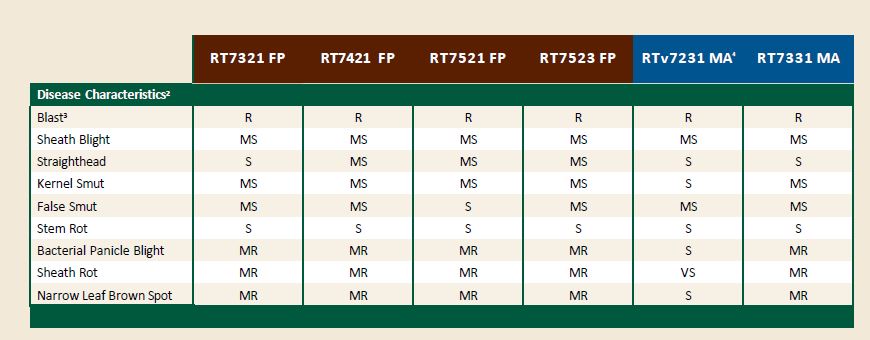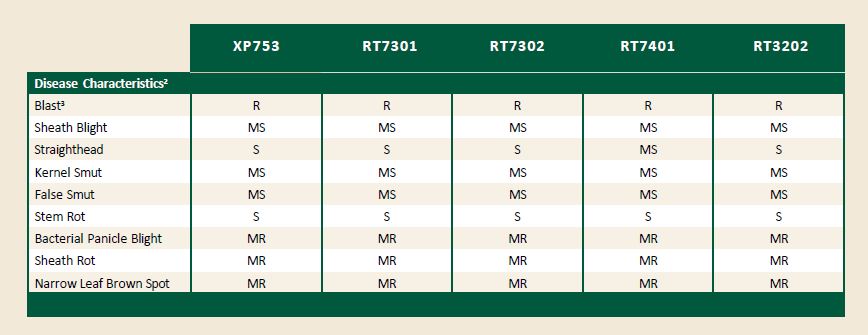Planting Recommendations
- RiceTec seed products adapt well to planting early and late. April planting in the Mid-South and March planting in southern Louisiana and Texas maximizes yield potential; however, the RiceTec advantage continues throughout the planting season.
- The preferred planting method for RiceTec seed products is drill seeding. The 2023 Replant Policy is designed to provide RiceTec seed customers a replant credit in the event a customer does not get an adequate initial stand on his/her RiceTec rice acreage. Refer to the 2023 Replant Policy or contact your local RiceTec Representative with questions or replant concerns.
- The RiceTec product seeding rate is at the discretion of the grower. Contact your local Representative or District Sales Manager to discuss what might work best for your farm.
- Seeding rates may need adjusting for specific field conditions, cultural practices, customer preferences, customer equipment, and planting dates. Please contact your local RiceTec Representative to discuss possible seeding-rate adjustments.
Nutrient Recommendations

Delay second nitrogen application until boot.
Nitrogen requirements for RiceTec seed products involve different timing than conventional varieties.
- Total N = 120-150 lbs.
- Preferred N = 90-120 lbs.
- Late Boot = 30 lbs.
Factors that can increase nitrogen use efficiency and protect your yield potential include:
- Applying urea to dry, crusted soil to ensure that nitrogen will move down the soil profile once flooded.
- Applying the recommended nitrogen rate for each soil type to maximize yield potential.
- Applying the flood immediately following pre-flood N application.
- Using nitrogen stabilizer to protect pre-flood urea from ammonia volatilization or if applications of urea are made when dry soil conditions cannot be obtained.
Nitrogen stabilizer has been shown to reduce nitrogen loss in less-than-ideal conditions and when the establishment of the permanent flood takes longer than 5 days.
- These recommendations may be adjusted according to specific situations on your farm; e.g., if nitrogen deficiency symptoms are evident at midseason, then apply 30 lbs. N per acre at midseason in addition to the base recommendation.
- Apply other nutrients (P, K, etc.) per soil test recommendations.
Herbicide Recommendations
Follow an integrated weed management approach.
- Apply herbicides as desired per manufacturer and/or university recommendations.
- Carefully read and follow all label instructions.
- Excessive rates and/or overlaps of Command® in association with stressful growing conditions may reduce final plant stand and should be avoided.
Disease Characteristics



RiceTec seed products offer the best available disease package. Although current RiceTec seed products normally do not require fungicide treatment, fields should be scouted closely for disease and treated with fungicides, when necessary. Consider field history and environmental conditions when making fungicide decisions.
Grain Retention
Begin harvest at 18%-20% grain moisture.
Current RiceTec products are very easy to thresh and should be harvested as soon as grain moisture reaches 18% to 20% to reduce possible grain loss and maximize milling yield.
Ratoon Management
Apply 100 lbs. N per acre prior to ratoon crop flood-up.
Ratoon crop nitrogen should be applied at a rate of 100 lbs. N per acre, preferably onto dry ground. Nitrogen should be applied and a flood should be established immediately after harvest. Increased nitrogen rates and/or flail mowing may cause up to a two-week delay in maturity, but grain yield increases of 500 to 1,000 lbs. per acre have been routinely documented in flail-mowed fields.